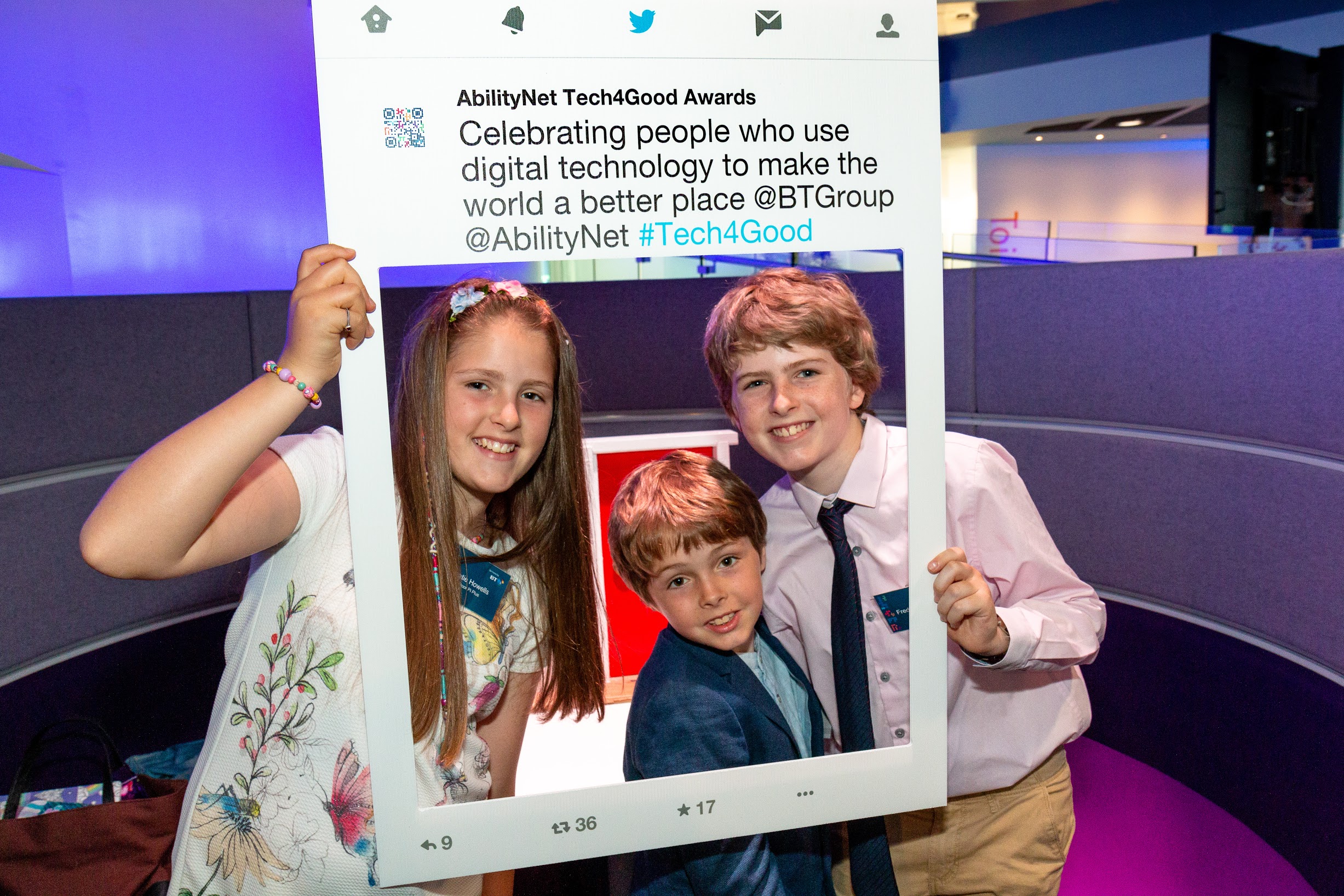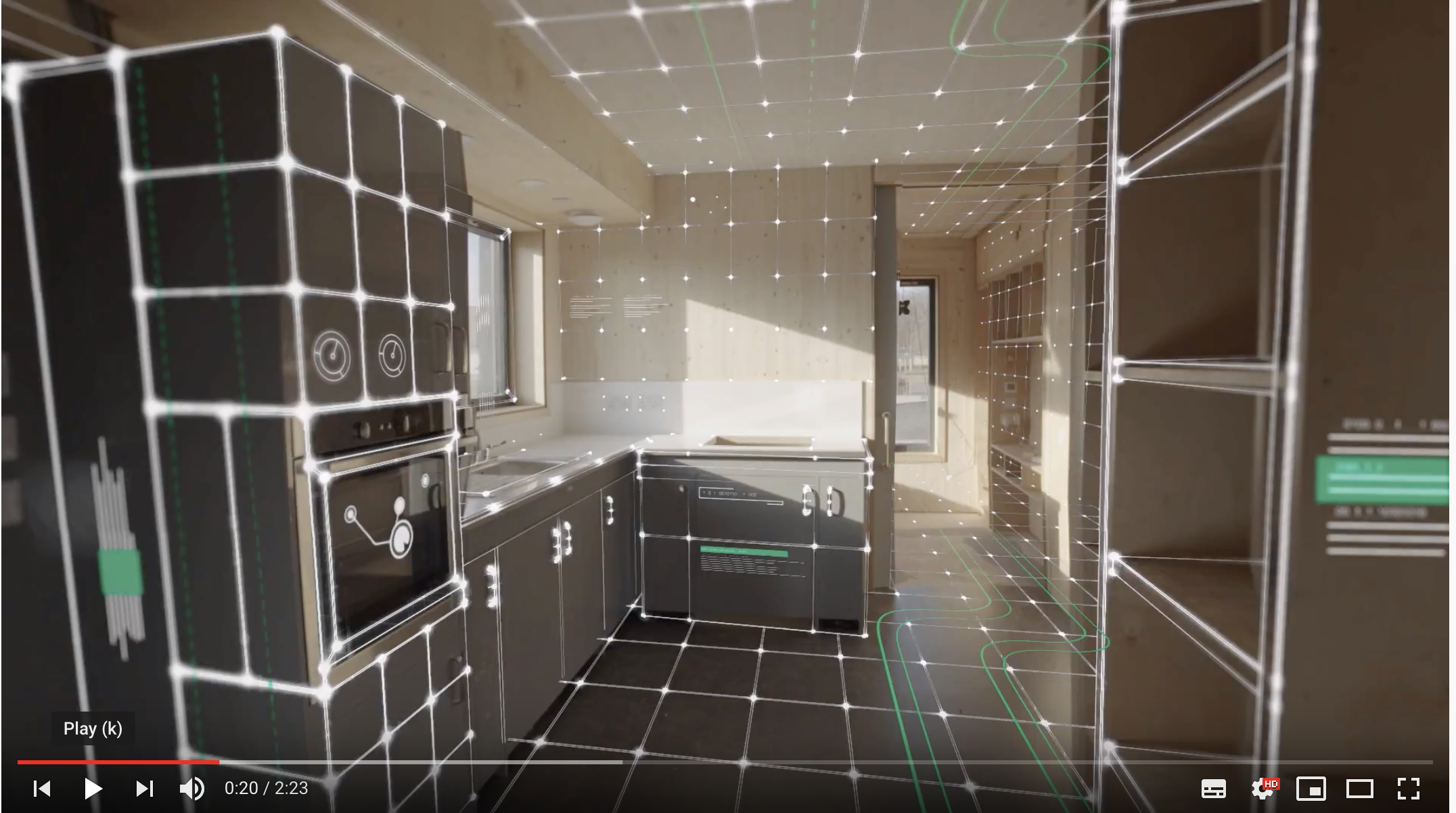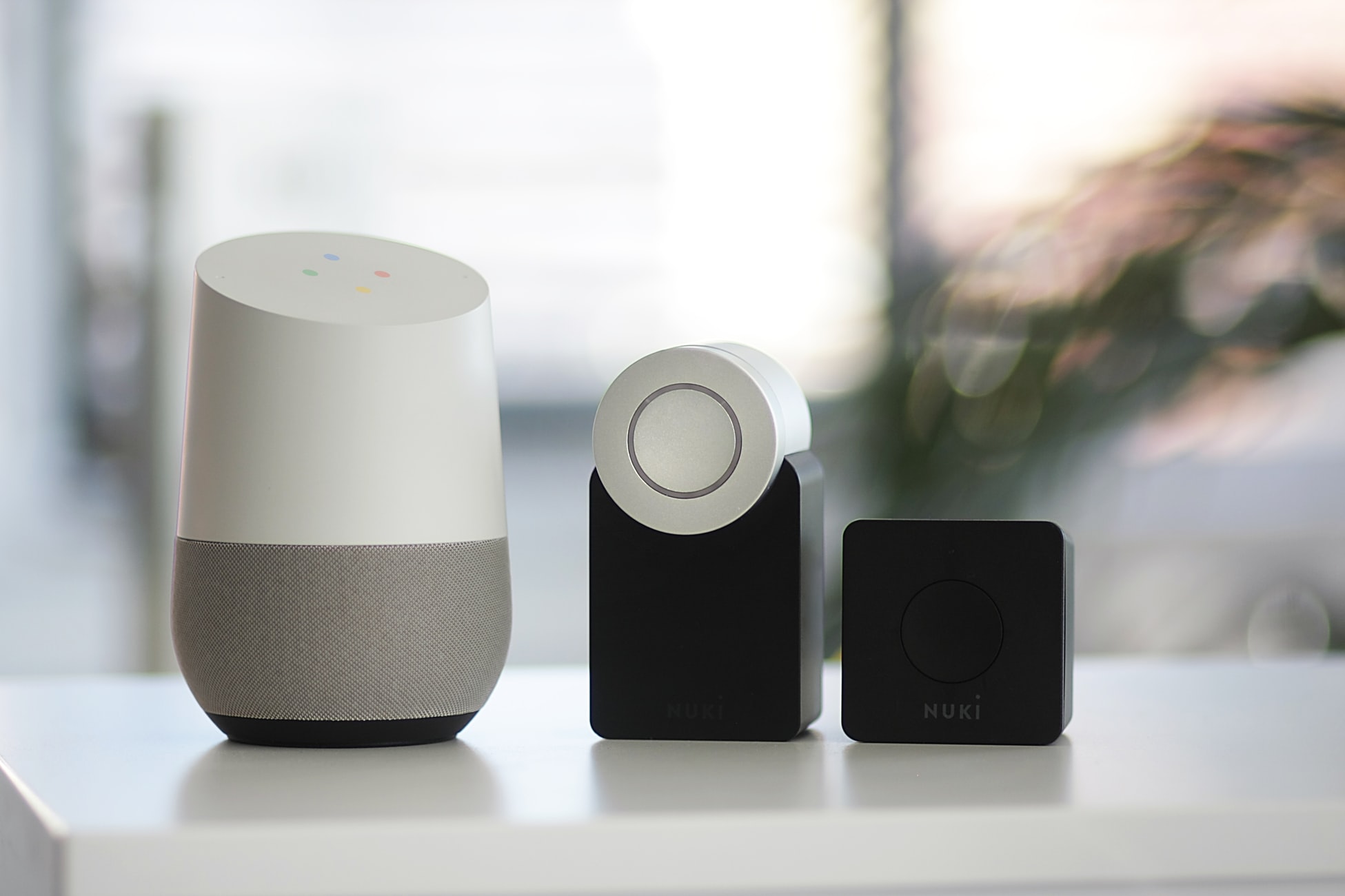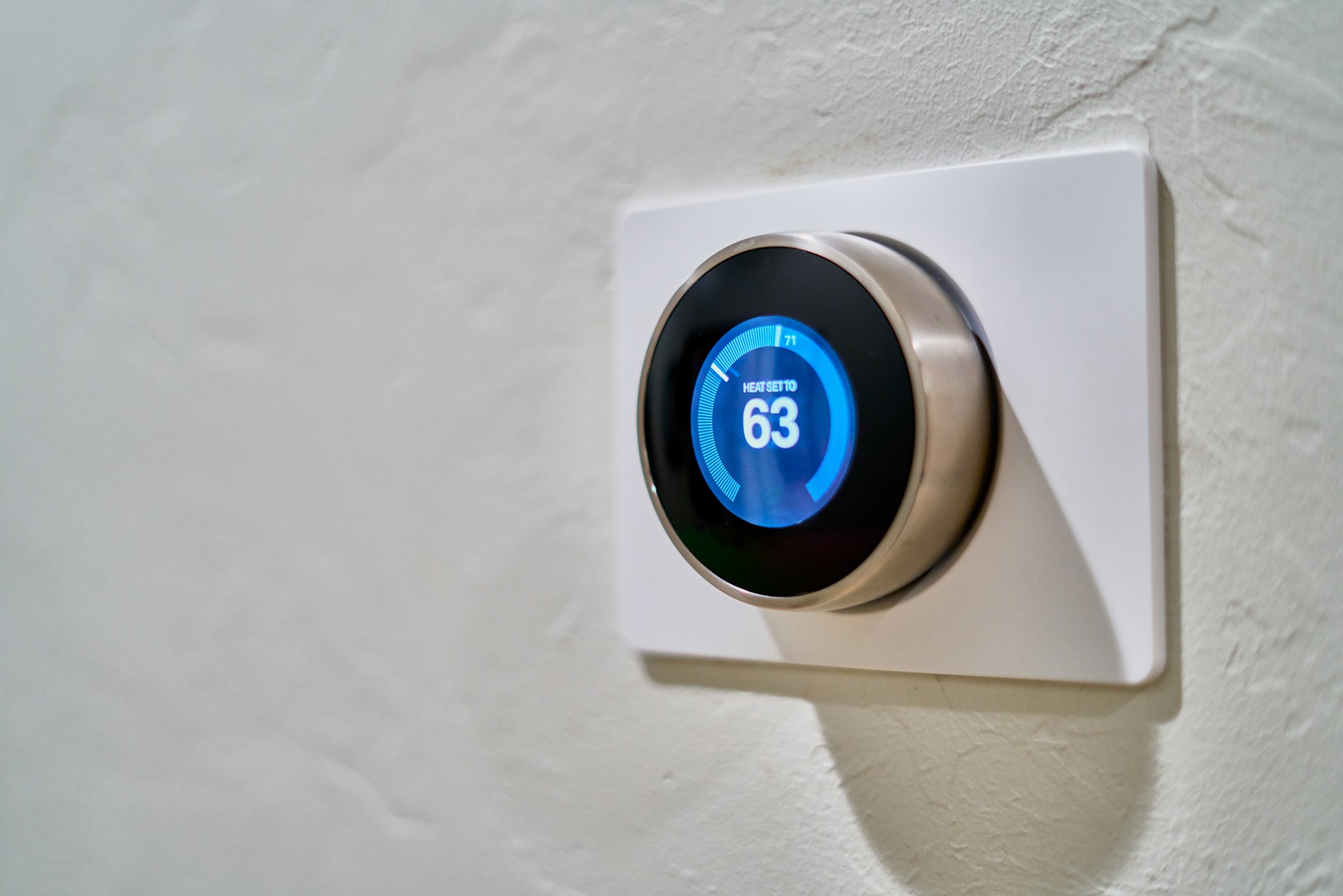Smart Home Help for disabled people
Sarah Botterill | 31 Oct 2019November 3 is smart home day. AbilityNet’s Service Development Manager Adam Tweed looks at how the internet of things is turning smart homes into a reality.
 The notion of a connected home with devices that could ‘talk’ to each other was once the stuff of science fiction. Today, the so-called Internet of Things (IoT) means home automation is easier than ever.
The notion of a connected home with devices that could ‘talk’ to each other was once the stuff of science fiction. Today, the so-called Internet of Things (IoT) means home automation is easier than ever.
IoT has the potential to transform the lives of disabled people including the estimated 850,000 living with dementia in the UK, giving them and the people who care for them peace of mind. For example, you can control IoT devices with smart speakers such as Amazon’s Alexa and Echo, while smart door sensors can monitor when someone leaves the house.
Combining these solutions can create a bespoke telemedicine-type solution without the need for more specialised equipment.
Read our free factsheet on dementia and computing
For example, if you’re concerned about an elderly relative you can set up a system so that if the kettle hasn’t been switched on since a set time, and the bedroom door hasn’t been triggered it will send you a text message. It’s worth noting that these types of solutions aren’t intended to be a substitute for human care.
We examine the types of devices available, and their potential to provide independence in the home.
Creating a dementia-friendly home
 Smart home technology is at the heart of Door Pi Plus a prototype home monitoring system designed for people with dementia and vulnerable adults. Door Pi Plus is the brainchild of Freddie Howells (pictured far right), BT Young Pioneer finalist for AbilityNet’s Tech4Good Awards 2019.
Smart home technology is at the heart of Door Pi Plus a prototype home monitoring system designed for people with dementia and vulnerable adults. Door Pi Plus is the brainchild of Freddie Howells (pictured far right), BT Young Pioneer finalist for AbilityNet’s Tech4Good Awards 2019.
The system combines a facial recognition door entry and home monitoring system.
It’s tailored to people with dementia as they can find it hard to remember people, and to make the right decisions about who should enter their house.
Using a Raspberry Pi microcomputer, a PIR motion sensor attached to the individual’s front door detects motion and it triggers the camera to take a picture of the visitor. This image is checked against a database of ‘known’ faces. If the face is recognised, the visitor is prompted to scan their ID tag for two factor authentication. If the face and ID match, the door is opened.
Predictive health monitoring
 Following the undiscovered death of one of its residents, Albyn Housing commissioned research to ensure the same thing would never happen again. Working with a modular construction expert and NHS Highland, the Albyn Housing Society-led partnership developed a new housing concept that hosts various sensors, enabling the capture of data and predictive health analytics.
Following the undiscovered death of one of its residents, Albyn Housing commissioned research to ensure the same thing would never happen again. Working with a modular construction expert and NHS Highland, the Albyn Housing Society-led partnership developed a new housing concept that hosts various sensors, enabling the capture of data and predictive health analytics.
The modular ‘Fit Home’ hosts various levels of sensoring equipment enabling the capture of data and associated predictive health analytics which could potentially help prevent episodes or events leading to ill health. It will also include flexible spaces and walls for storing medical equipment.
Developed through co-design with partners, potential tenants, health and care professionals, young people and enterprise experts, the Fit Home could prevent hospital admissions and enable hospital discharge. The homes include ambient, physiological and building sensors to collect data that can be monitored and responded to by a variety of agencies.
By looking at data surrounding areas such as dehydration, diet, the use of certain prescribed medication and levels of activity and social interaction, the partnership hopes to develop a means of using digital technology to enable families and agencies to intervene with preventative measures and prevent falls, and other related incidents.
The pilot phase is now complete, and homes have all been allocated in partnership with the NHS and the Highland Council. The team is preparing to roll out further Fit Home test beds to include housing partners and tenants which will include retrofitting the technology into existing homes.
Read more about the Fit Home project, which was a Tech4Good finalist in 2019
Devices to make your home smarter
Cameras for communicating with seniors
It’s an invasion of privacy to monitor or video someone at home without their knowledge or consent.
KOMP is a one-button screen for seniors, and provides a simple means of maintaining contact with someone who may struggle to use technology. Targeted at seniors, the device provides a simpler way to connect than via a tablet. The device has a simple, single dial on/off control and familiar radio-like design will allow someone less comfortable with technology to control the device and will enable family members to share content, but also video-chat to check in on someone.
Door sensors for monitoring people coming and going
Less invasive than cameras, door sensors can be set to trigger messages when a door is opened. Rules can be set up to control the time of day these might be set for (only triggering if the front door is opened after sunset for example).
Electronic Door locks for trusted entry
Many makes of electronic door lock can be set up to allow remote unlocking so you can allow access to a trusted person should you be unable to contact your relative.
Motion Sensors for smart lights, and more
Motion sensors are useful as they can be connected to things like smart lights so that the lights are switched on automatically if they sense movement, avoiding the need to cross a room to get to a light switch at night. Some motion sensors can also be set up to detect an absence of movement providing some level of reassurance when it comes to the risk of falls and again are less intrusive than a camera.
Smart lights activated by voice
 Smart lights can be set up to only come on between sunset and sunrise (and they can find out what this time should be based on your location as well as allowing you to set a standard adjustment should your home get darker sooner or later). They can be connected to a voice assistant; an Amazon ‘Alexa’ or Google Home so can be triggered by voice command or can be triggered by other sensors such as a door or motion sensor (below).
Smart lights can be set up to only come on between sunset and sunrise (and they can find out what this time should be based on your location as well as allowing you to set a standard adjustment should your home get darker sooner or later). They can be connected to a voice assistant; an Amazon ‘Alexa’ or Google Home so can be triggered by voice command or can be triggered by other sensors such as a door or motion sensor (below).
Voice Assistants to make a quick call
Voice assistants such as the Google Home and, more recently, the Amazon Alexa have both a call feature so a person can call a contact by voice request “Alexa, call Alice.” Alexa also has a ‘drop-in’ feature allowing specified contacts to begin a conversation.
Video doorbells
External cameras/video doorbells can monitor a property for movement and can message a person to let them know someone is calling. Many modern systems include 2-way communication allowing you to have a conversation with any caller as well as record an interaction or a face. Motion-sensing video cameras will also be able to let you know if someone, such as a vulnerable relative, leaves the property.
Home hacks for a safer environment
 Leak Sensors: Home automation and monitoring also extends to sensors designed to monitor for things like leaks, but the same system can be set to check for taps left running for example. There are also systems that can automatically shut off taps.
Leak Sensors: Home automation and monitoring also extends to sensors designed to monitor for things like leaks, but the same system can be set to check for taps left running for example. There are also systems that can automatically shut off taps.
Thermostats: The smart thermostat was one of the first widely implemented and whilst most of us familiar with thermostat-wars will recognise the how invasive adjusting someone else’s thermostat might feel, the ability to check on the temperature of the home of a relative you may be concerned about is undeniable, even if the advice would be to ring them to check whether they were comfortable.
How AbilityNet can help you
AbilityNet provides a range of free services to help disabled people and older people.
Call our free Helpline. Our friendly, knowledgeable staff will discuss any kind of computer problem and do their best to come up with a solution. We’re open Monday to Friday from 9am to 5pm on 0800 269 545.
Arrange a home visit. We have a network of AbilityNet ITCanHelp volunteers who can help if you have technical issues with your computer systems. They can come to your home, or help you over the phone.
We have a range of factsheets which talk in detail about technology that might help you, which can be downloaded for free. You may find our factsheet six top tips for a dementia-friendly website helpful.
My Computer My Way. A free interactive guide to all the accessibility features built into current desktops, laptops, tablets and smartphones.



